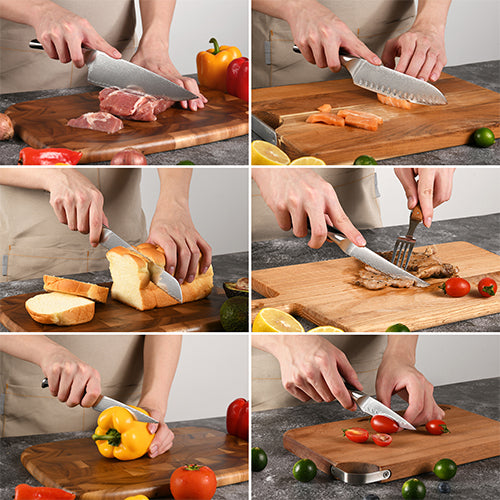Expert Support
Available 24/7 via chat

Originally, Damascus steel was used to get the mid between high-carbon steel and iron. If the high carbon steel was used, it was often too high, and due to them needing to learn heat treatment to the advance we know today, it would snap too easily. Iron would dull too quickly. The mixture got more or less right in between. Nowadays heat treating technology, as well as the ability to get the exact amount of carbon, has made mono steels far surpass Damascus of old, so as far as edge retention and toughness goes, modern Damascus is only equal or inferior to mono steels (it's possible to mess up the steel while welding it).
However, Damascus has one benefit: as I said, it mixes high and low-carbon steel, which means the edge will have alternating layers of low-then-high carbon from heel to tip. As the knife is used, the low carbon (usually the black bands in steel) wears away quicker, but the high stays sharp. The results in microscopic serrations, which are impossible to get that small otherwise . Serrated knives, as a rule, remove material faster, but because of large serrations, they rip the material away rather than separating it, essentially destroying the fabric. If you tried cutting a tomato with a serrated blade, you'd end up with a splatter of juice everywhere, but a smooth edge (if slightly dull) will slide on the tomato skin rather than cutting it. The Damascus blade, however, has micro serrations: the edge of a given high carbon layer where it meets the (dulled away) low carbon is a sharp corner, which nicks and opens the tomato skin. Not big enough to rip it apart and send juice everywhere, but big enough to efficiently cut even when not dulled.